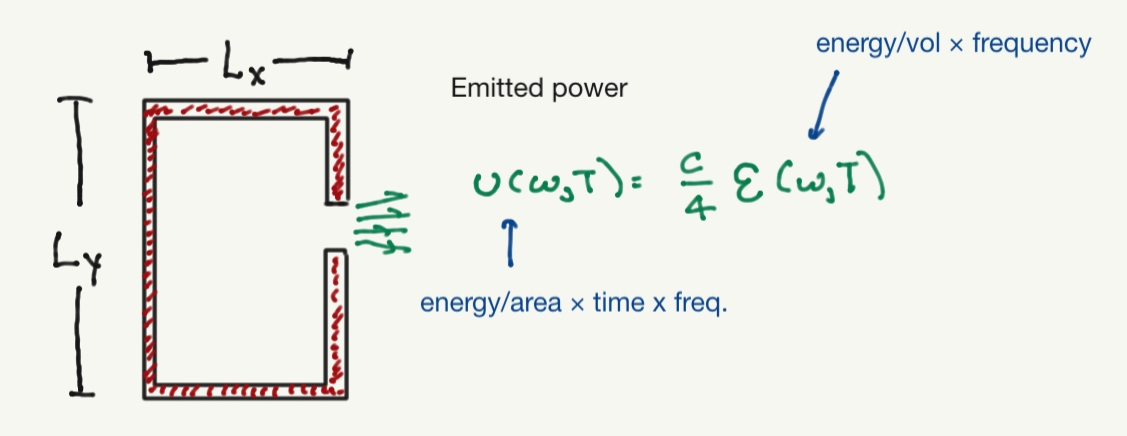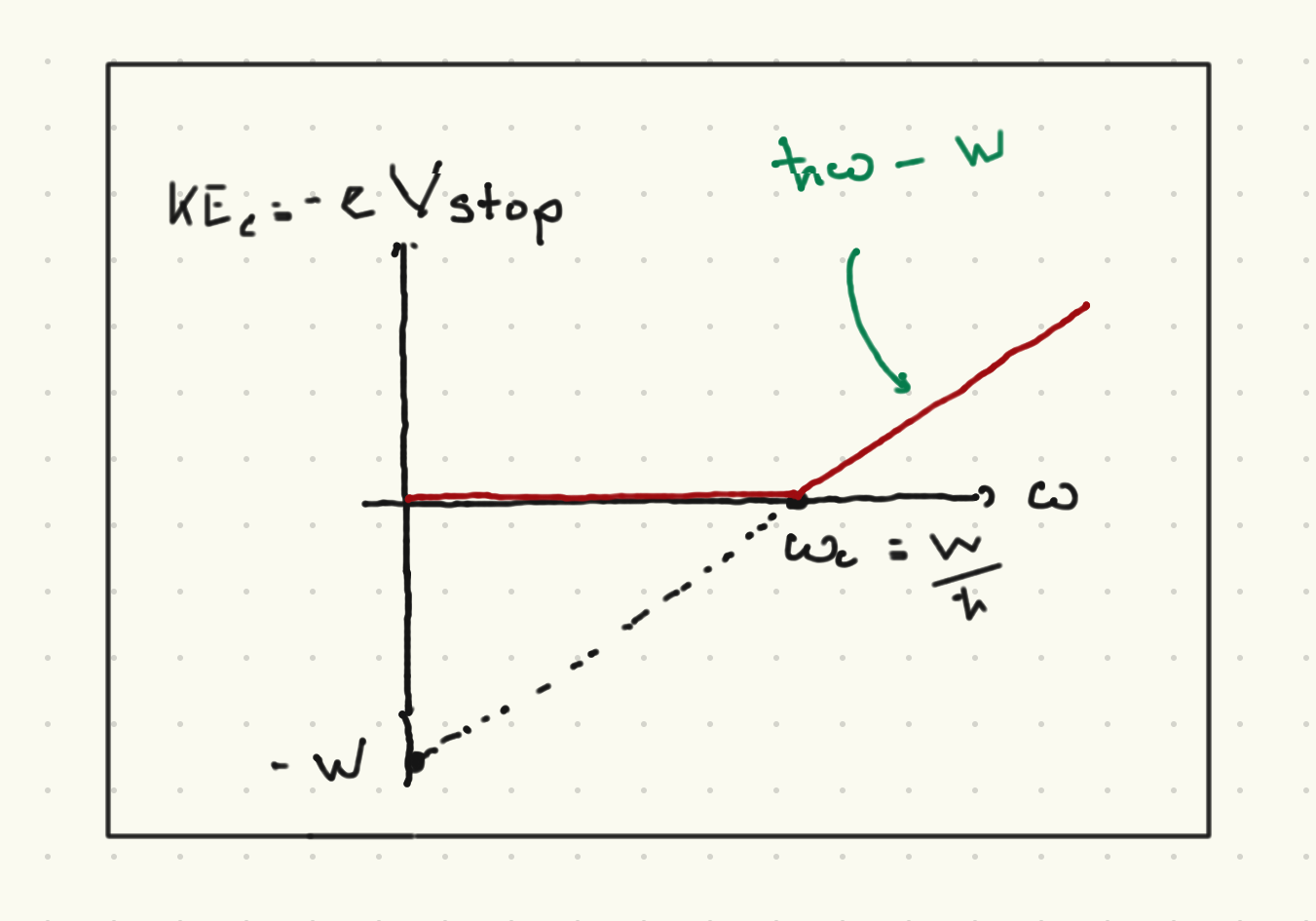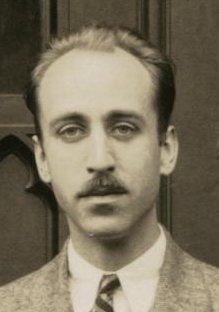Introduction to quantum mechanics#
I will start with a quasi-historical, phenomenological discussion of some basic aspects of quantum mechanics:
The need for a new dimensionful quantity \(\hbar\) with units [Energy \(\times\) time].
The quantization of the energy of light with frequency \(\omega\) into parcels (“photons”) with energy \(\hbar \omega\),
The fact that quantum states can be written as complex vectors, and that the sum of two such vectors is another legitimate quantum state.
The probabilistic nature of the outcome of quantum measurements.
These are all important; point (3) motivates a serious survey/review of linear algebra, which is also needed to discuss (4) more precisely.
Blackbody radiation#
Consider a cavity with walls at some temperature \(T\), such that the electromagnetic field inside of the cavity is at equilibrium with the walls

What is the expected energy density inside the cavity? We could (following many textbooks) try to comute this from classical electromagnetism, but we will appeal to dimensional analysis.
The total energy density should be an integral over all allowed frequencies:
Here we are assuming that the volume of the box only appears in the total energy \(E = V \CE(T)\), which is a thermodynamically extensive quantity. This makes sense if the box is very large compared to the wavelength of the light inside.
We have the following dimensionful quantities available to construct \(\CE(T,\omega)\):
The frequency \(\omega\).
The temperature writen as a thermal energy \(k_B T\).
The speed of light \(c\).
To get an energy density we can make an energy from \(k_B T\) and a length scale \(c/\omega\) (proportional to the wavelength). \(\CE(T,\omega)\) should have units of energy denisty per frequency. The only combination of the above yielding a quantity with the right dimensions is:
where \(A\) is a dimensionless constant that requires a first-principles calculation to obtain. This is called the “Rayleigh” law and \(A\) was calculated by Rayleigh in 1900.
The total energy is thus
This is sometimes termed the “ultraviolet catastrophe”. What is needed is some new dimensionful scale, so that the integral is better behaved. One possibility is to just assume that the electromagnetic field has a largest possible frequency \(\omega_{max}\) and the integral is cut off.
However, the real issue is that the black body spectrum does not look like this. \(\CE(\omega,T)\) is observable, for example by poking a small hole in the side of the black body and measuring the spectrum of teh emitted power (as illustrated above). It was already known that at high frequencies the black body spectrum follows the (phenomenological) Wien law \(\CE(\omega,T) \sim \omega^3 e^{-c \omega/(k_B T}\), where \(c\) is some constant (which must have units of [energy \(\times\) time].)
Planck deduced a functional form that he later justifies with a hypothesis. We well cheat and start with that hypothesis. Let us fix the polarization state and the wavenumber \({\vec k}\) of a mode of the electromagnetic field (ignoring boundary conditions and such, this is all very handwavy to make a point). We assume that each mode has an energy that is an integer multiple of \(\omega\):
whefre \({\hat n}_{pol}\) denotes one of teh two independent polarization states (linear, circular, etc). To get an expression appropriate for thermal equilibrium, we must do statistical mechanics. Boltzmann’s hypopthesis states that the probability of the mode being in the state labelled by \(n\) is:
where we have used the classic formula \(\sum_{N = 0}^{\infty} x^N = \frac{1}{1 - x}\) for \(x < 1\). To get the thermodynamic behavior, we need to compute the average energy per mode using the above probability distribution:
If we carefully sum over all wavenumbers (with fixed frequency) and polarizations, we get:
One can show that this takes the Rayleigh form for \(\hbar\omega \ll k_B T\) and the Wien form for \(\hbar\omega \gg k_B T\). Finally, to tie this back to our earlier dimensional analysis, we can rewrite it as:
where
In other words, the fact that we can create a new energy scale \(\hbar\omega\) is what allows us to write a functional form for \(\CE(\omega,T)\) consistent with the observed high- and low-frequency limits. Note that we now know the soure of this quantization (and we will say more about it below): light comes in “packets” consisting of individual particles known as photons with energy \(\hbar\omega\).
This black body spectrum is observed with exquisite prediction. As an example, a prediction of the hot big bang theory is that the early universe had a phase in which electrons, protons, and photons were in a state of thermal equilibrium with temperature \(T \sim 3000K\). The photons would then have the black body spectrum at this temperature. At \(t \sim 10^5\) years after the big bang, the electrons and protons combined to form neutral hydrogen. The photons retained the blackbody spectrum; however, as the universe expanded, the photons redshifted. The functional form of the blackboddy spectrum is known to be retained, with the temperature appearing as a parameter that decreases with redshift. Thus, we should see a “cosmic microwave background radiation” (CMBR) today, a blackbody spectrum parametyerized by a temperature \(T \sim 2.73K\). This has been observed to exquisite precision by the Cosmic Background Explorer (COBE) satellite which announced their results in 1992. (Different parts of the spectrum had been observed by earlier ground-based and balloon-borne experiments. This is a long and fascinating story with some interesting wrong turns. COBE showed that the spctrum was truly a blackbody spectrum from the Rayleigh through to the Wien range). There are small deviations from this, represented by local deciations in temperature, to a part in \(10^5\). This is consistent with the hot big bang theory, and inn fact these small flcutuations are the seed for the cosmic structure we see today.
The photoelectric effect#
The next phenomenon was famously discussed by Einstein during his annus mirabilis of 1905. Consider a beam of light with frequency \(\omega\) shining on an electrode comprised of some particular metal. A cathode can be reached by electons in the metal if they can travel across some voltage drop \(V\).
Hertz observed the following in 1887:
The plates emit electrons (and no positvely charged particles)
Whether the plate emits electrons depends only on the frequency of the incoming light, and not on its intensity.
The magnitude of tte current in the cathode is proportional to the frequency
The energy of each photoelectron (as measured by mmeasuring for what \(V\) an electron hits the cathode) is independent of the intensity of the light, and is linear in frequency, above some critical frequency \(\omega_c\) which depends on the metal (and not on the photon frequency).

Einstein’s interpretation was that light consistened of single particles or \photons, each of which carries an energy \(\hbar \omega\). Electrons acquire kinetic energy by absorbing a single photon. To be ejected from the metal, the electron must cross a potential barrier \(W = \hbar \omega_c\) which is intrinsic to that metal (\(W\) is called the work function of the metal). The kinetic energy is for frequencies higher than \(\omega_c\) is thus
where \(\theta(x)\) is the Heaviside step function. The point here is that the packets of energy Placnk suggested could be interpreted as a single quantum or particle of light called a photon whose energy is related to their frequency by the dimensionfuil constant \(\hbar\). Increasing the intensity of light does not change the energy of each photon, but the number of photons. If there is not a single photon with enough energy to eject an electron, no electron will be ejected.
Now consider an electromagnetic field with a given polarization and wave vector \({\vec k}\), such that \(\omega = 2\pi c |{\vec k}|\).
Photon polarization#
Classical description#
Consider an electromagnetic field propagating in a vacuum along the \(z\) direction. The most general solution to Maxwell’s equations in this case is:
where \(E_{x,y} \in \mathbb{C}\) so that \(E_i = |E_i| e^{i\delta_i}\), and \(\omega = c k\). We can rewrite this as
The magnetic field \({\vec H}\) can be determined from the Maxwell equation
This supports various polarization states such as
Linear/plane polarization: \({\vec E}_x = E e^{i\delta} {\hat n}\) where \(E\) is a positive real number and \({\hat n}\) a unit vector in the \(x-y\) plane. In particular \({\hat n} = {\hat x}, {\hat y}\) correspond to plane polarization along the \(x\)- and \(y\)-axis respectively.
Circular polarization:
Left circular polarization (LCP): \(E_y = - i E_x = - i E e^{i\delta)\), or equivalently \({\vec E}_c = E({\hat x} - i {\hat y})e^{i\delta}\). Thus:
Right circular polarization (RCP): \(E_y = i E_x = i e^{i\delta}\) or \({\vec E}_c = E({\hat x} + i {\hat y})e^{i\delta}\). Thus:
Note that for any plane wave, \({\vec E}_c\) can be written as a linear combination of left- and right-circular polarizations, or as \(x\)- and \(y\)-plane polarizations.
The energy density is
Assuming the field propagates in some volume \(V\), the total energy is
the factor of 2 in the denominator comes from integrating the \(\cos^2\) factors over \(z\).
Now let us pass our beam through a polarizer. We call an “x-polarizer” one which admits only light polarized along the \({\hat x}\) direction, so that \(E_x\) remains unchanged by \(E_y\) is set to zero. In general, we can consider a polarizer aligned along any complex unit vector \({\hat n}\) so that any initial light wave described by (123) becomes
For a polarizer aligned along \({\hat x}\), \({\hat n} = {\hat x}\); for a polarizer admitting LCP, \({\hat n}_{LCP} = \frac{1}{\sqrt{2}} \left({\hat x} - i {\hat y}\right)\); for a polarizer admitting RCP, \({\hat n}_{RCP} = \frac{1}{\sqrt{2}}\left({\hat x} + i {\hat y}\right)\).
This generally reduces the energy of the beam of light. For example, we can show that if we consider light polarized along \({\hat n} = \frac{1}{\sqrt{2}} \left(\hat{x} + {\hat y}\right)\), that is at a \(45^{\circ}\) angle fromthe \(x\)-axis, and pass it through a polatizer aligned along the \(x\) axis,
The energy is in this case cut in half:
Quantum description#
If we apply Planck and Einstein’s insights, the beam of light consists of photons with energy \(U = N\hbar \omega\). Consider the case above of light polarized at \(45^{\circ}\) from teh \(x\)-axis passing through a polarizer aligned along the \(x\) axos. Then \(U_{final} = \half N \hbar \omega\) and the number of photons is cut in half. But now we should be asking:
which photons pass through the polarizer?
also what if \(N\) is odd?
Our best available interpretation is that each photon has a \(50\%\) chance of passing through this polarizer. For typical classical beams one can see that \(N \gg 1\), so that the law of large numbers/central limit theorem tells us
For more general polarizations,
So the probability of a single photon passing through the polarizer, given the polarization state listed above, is
<<<<<<< HEAD For a more general polarization states, the probability of the photon passing through the polarizer aligned along the \(x\)-axis is
For single photon with fixed frequency and wavenumber,
For an electric field satisfying this relation, we can write a “state vector” that describes the photon polarization:
The notation \(\ket{\psi}\) should here be understood in this way, as shorthand for a vector (here a two-dimensional vector with complex entries). Using (137) we can see that \(|\psi_x|^2 + |\psi_y|^2 = 1\), apnd that \(p_x = |\psi_x|^2\). Similarly, the probability of the same photon passing through a polarizer aligned alongthe \(y\) axis is \(p_y = |\psi_y|^2\). It is as if the two possible outcomes are that the photon is polarized along the \(x\) or \(y\) axis. On the other hand, we could rotate both polarizers by (say) \(17^{\circ}\) and do the same experiment and the probability of the photon passing through each of the two perpendictular polarizers will sum to \(1\).
Finally, not that there is a linear structure to the space of photon polarizations, in that we can add two polarization vectors and get another polarization vector, up to the overall normalization constraint (137) for a single photon. In particular, if we define
then any polarization can be described by the linear combination
with \(\alpha,\beta \in \mathbb{C}\), and \(|\alpha|^2 + |\beta|^2 = 1\). Similarly, we can consider the circular polarization states:
You can show that any polarization state satisfying (137) can be written as
with \({\tilde\alpha}, {\tilde\beta} \in \mathbb{C}\), if \(|{\tilde\alpha}|^2 + |{\tilde\beta}|^2 = 1\).
The essential point here is that the states of the photon are described by a 2-coponent vector; these vectord can be added to describe other polarization states; and the components are related by taking the absolute value squared to the probability of certai exoperiments yielding a certain outcome.
This hints at a very general structure for describing physical states and teh reults of mesurement in quantum mechanics. To set this up we need to lay down the correct mathematical language for describing such vectors, namely linear algebra.
